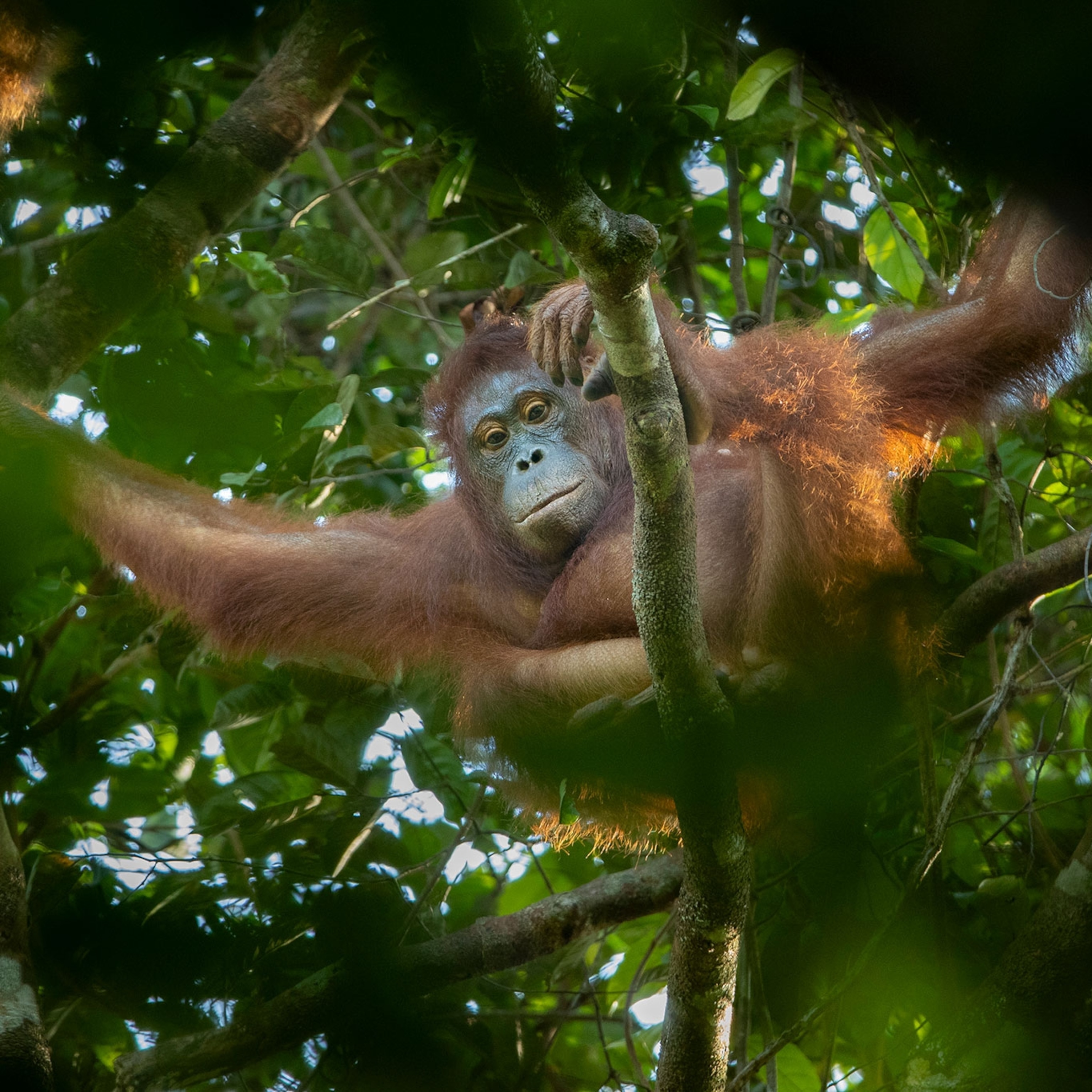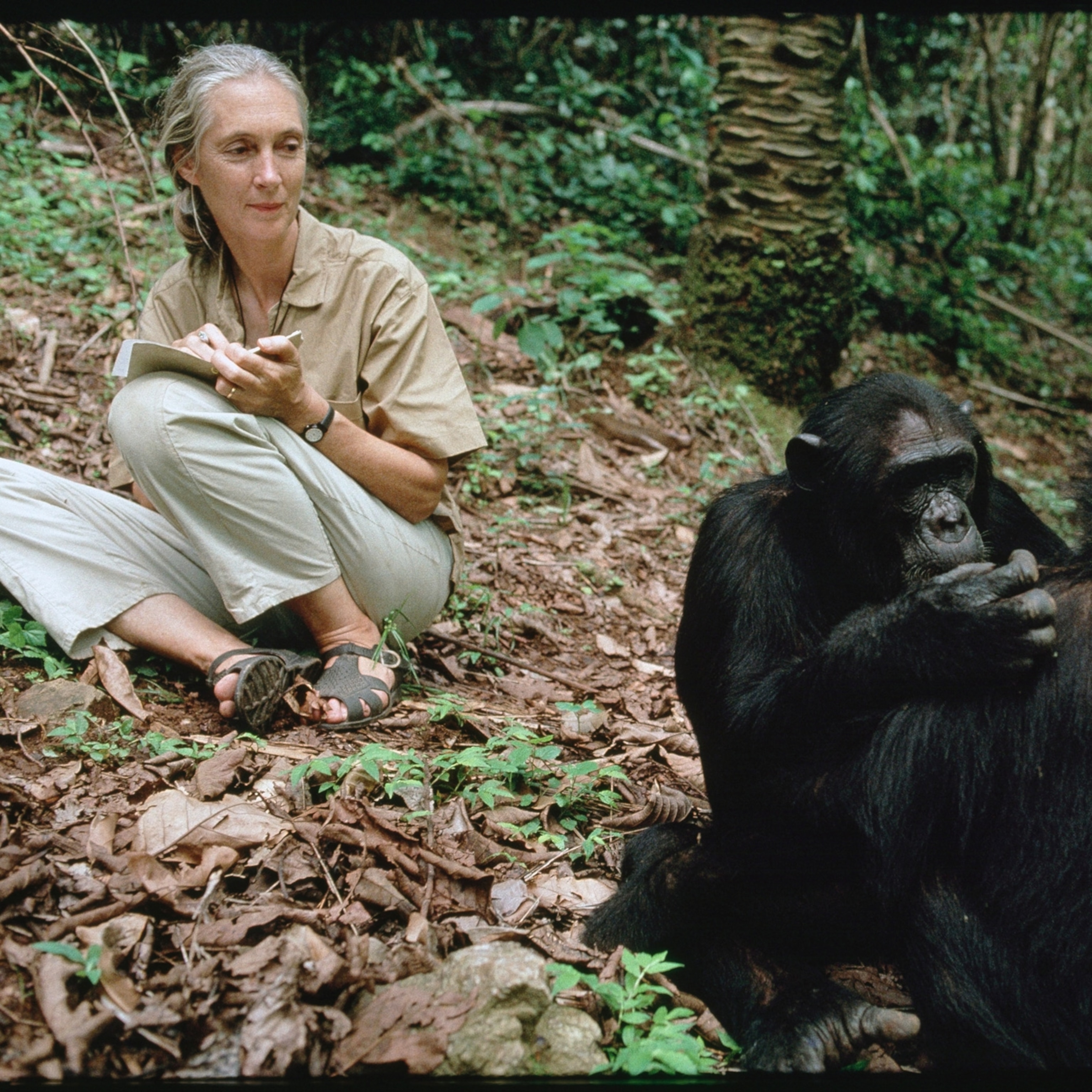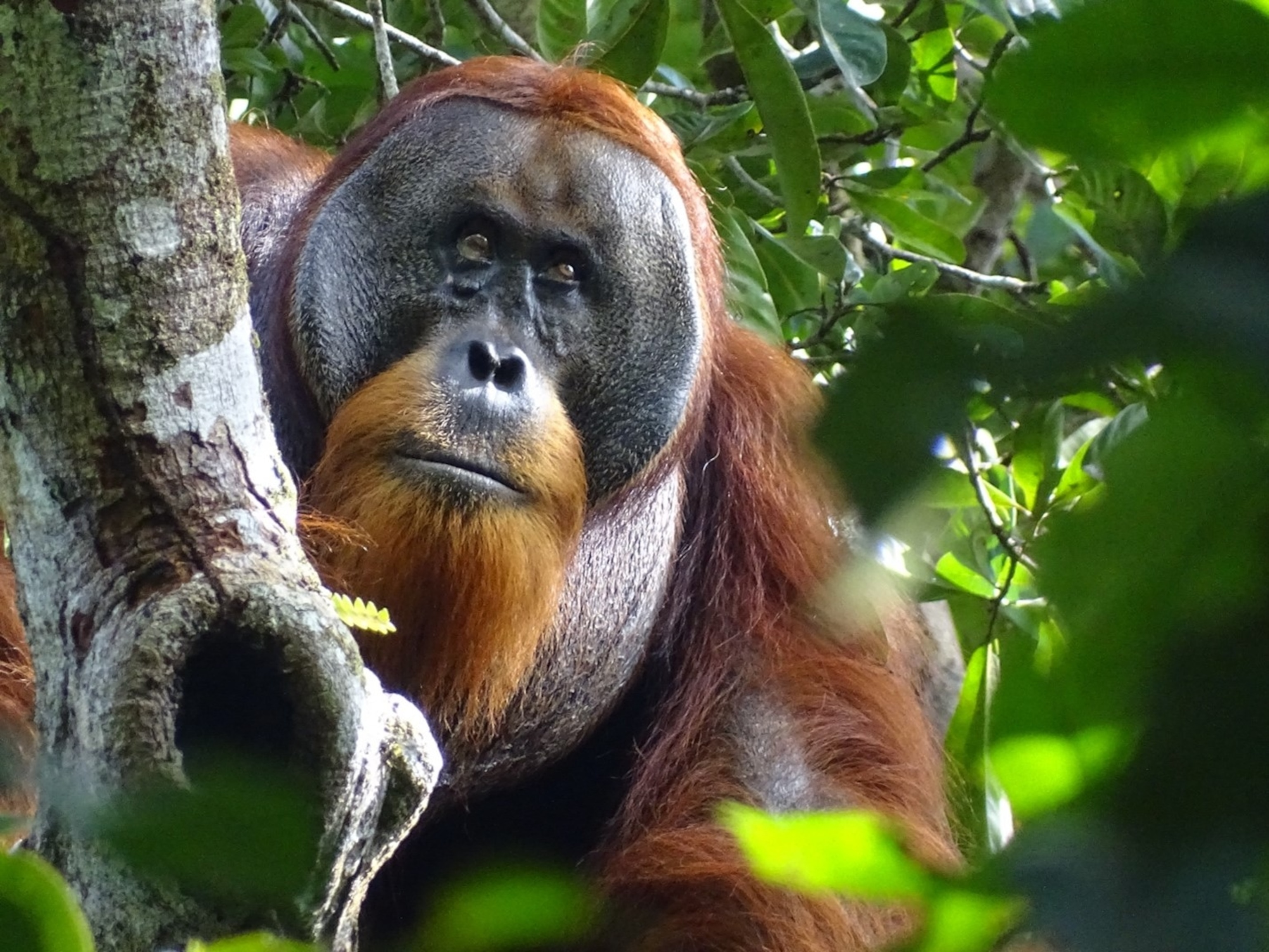
How Some U.S. Ape Sanctuaries Fail Their Animals and Staff
Staff complaints at a chimp sanctuary whose founder had no formal training in primate care point to problems compounded by weak oversight.
Kaleigh Rhoads recalls that cloudy afternoon in May 2015. She’d just picked up a new intern from the airport when she received a disturbing call: A chimp named CJ had escaped from her enclosure and was at large in a building employees call the Chimp House.
“My jaw just dropped,” she says. Chimps may look friendly, but they’ve been known to maim or kill people.
Rhoads, 24, had recently finished training at her dream job as a caregiver at Chimps Inc., an animal sanctuary in Oregon then home to seven chimpanzees. Nestled on a five-acre farm with a stunning view of the Cascades, Chimps Inc. is a place where the apes are photographed trying on hats and chowing down on watermelon. In the two-bedroom house where trainees live, a plaque commemorates one of two visits by Jane Goodall.
Chimps Inc.’s founder, Lesley Day, had opened a door to get one chimp more blankets, and while her back was turned, CJ crawled out of the enclosure. A volunteer working alongside Day left the Chimp House when she saw what was happening, but Day stayed inside and locked the door behind her.
Day mixed the sedative Telazol into a pudding cup and offered it to CJ. According to the internal incident report, the drug didn’t work, so Marla Meyer, Chimps Inc.’s executive director, and a volunteer stood at a window near an adjoining enclosure, offering CJ grapes, juice, and beer to lure her back into the enclosure system. It wasn’t until four hours later, after CJ had “consumed multiple beers and candy,” that she was securely back where she belonged.
Luckily no one was injured during the escape, but the breakout rattled Rhoads and other caregivers. (Rhoads left Chimps Inc. in 2017 and is now working in a veterinarian’s office.)
Complaints subsequently filed by employees spurred a six-month investigation of Chimps Inc., completed in early October 2017, by Oregon’s Occupational Safety and Health Division (OSHA). The employees, all of whom have left Chimps Inc., alleged that management repeatedly underplayed and ignored employee workplace safety concerns.
According to the OSHA report, CJ’s escape was one of 30 incidents that have occurred at the sanctuary since it opened in 1995. The investigation resulted in a citation detailing 10 violations, including CJ’s escape, and totaling more than $20,000 in fines. Chimps Inc. filed an appeal on November 3, 2017. Meanwhile, Oregon’s Bureau of Labor and Industries, which upholds workers’ rights, has an ongoing investigation.
Chimps Inc. is just one of several dozen places in the United States that house an estimated 16,000 captive, non-laboratory primates. Some live in public zoos, while others are cared for by independent, cognitive research facilities, sanctuaries, independent zoos, private owners, or even breeders. The Oregon sanctuary is one that has undergone scrutiny for alleged safety violations and animal welfare issues during the past 15 years.
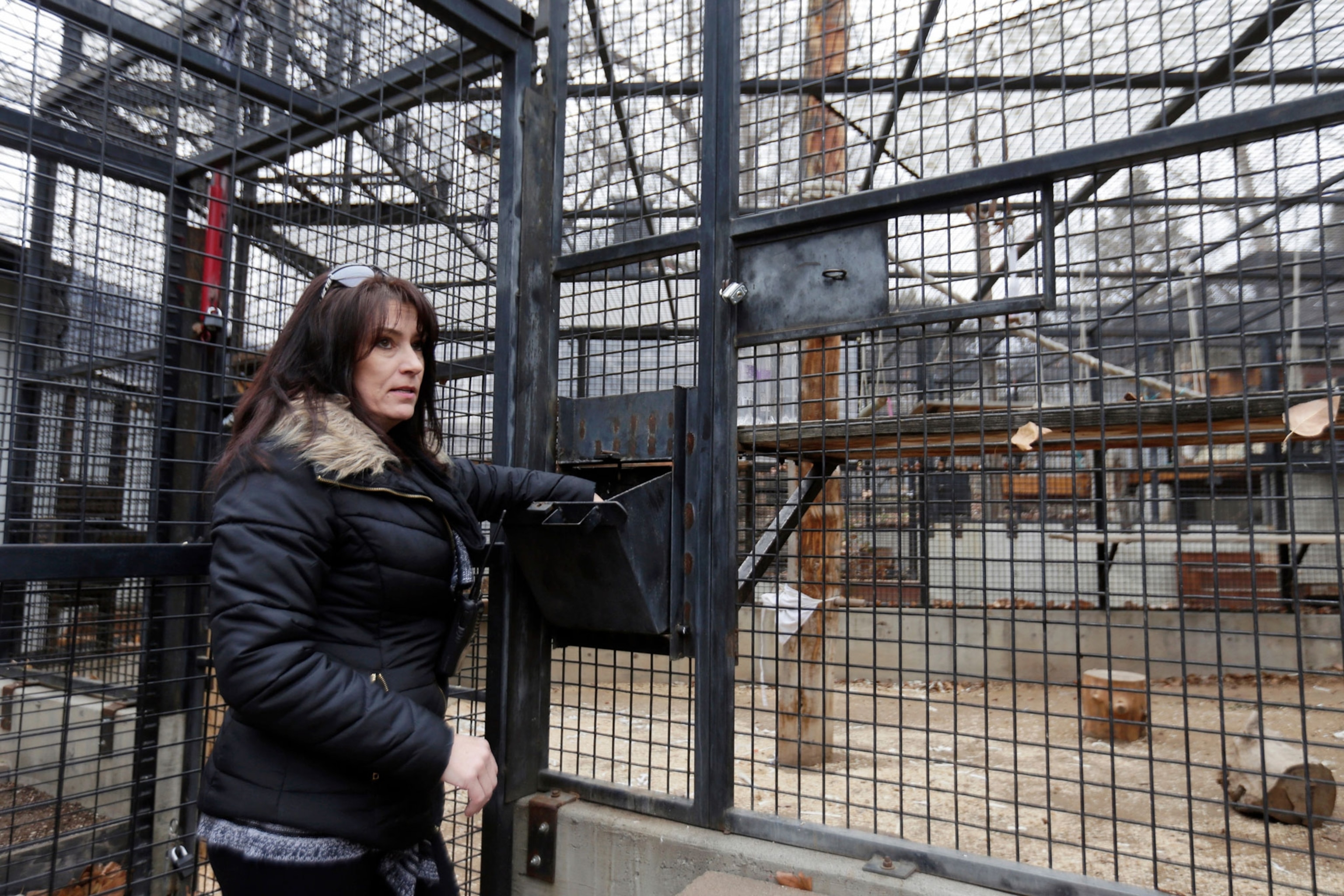
Although Chimps Inc.’s management told OSHA that “there were no human injuries or incidents with the chimps” in all the years it’s been operating, investigators found evidence of several incidents that resulted in “bites, scratches, bruises, skin de-gloving, mauling’s [sic] and at least four finger or thumb amputations.” One of those involved Day herself, who lost her right pinkie finger to a chimp named Maggie in July 2013.
The OSHA report corroborates accounts from former employees who came forward to National Geographic with their concerns: the use of large doors through which chimps could crawl; a lack of safety protocols that protect employees and decrease opportunities for chimps’ escapes; the practice of giving chimps Telazol mixed with liquid, despite the manufacturer’s specifications that it’s intended for intramuscular, not oral, use; and feeding chimps beer to calm them.
In addition, former employees allege that they were asked to work alone, making it difficult for them to perform the necessary safety checks when moving chimps around in their enclosures. Diet and health were also points of contention. Rhoads and former caregivers Rhianna Axon and Zeya Wagner say they saw Day feeding chimps treats like “processed meats, hot dogs, pickles, cake, pie, McDonalds Happy Meals, and candy,” and were concerned that management had stopped treating one chimpanzee for diabetes.
“It’s a huge part of any sanctuary to have a good set of care standards and protocols,” explains chimp expert Stephen Ross, director of the Lester E. Fisher Center for the Study and Conservation of Apes, at Chicago’s Lincoln Park Zoo. “Chimps have to be one of the most dangerous animals—they’re physically strong and so smart. They’re inventing plans in their head of ways to kill you.”
In response to employees’ concerns and the OSHA investigation, Chimps Inc.’s executive director, Marla Meyer, says Day’s access to the chimps has been revoked and that she has no day-to-day involvement with operations. (National Geographic contacted Day on three occasions, and she said that Chimps Inc. was “taking care of things” and that “there were a lot of false accusations, that’s for sure.”) Meyer says she’s committed to “doing everything right” and “making sure everything is safe for humans and chimps.”
Following the investigation, Chimps Inc. has decommissioned sliding feed doors like the one CJ escaped through and has complied with OSHA’s safety recommendations. Meyer says the sanctuary began using Telazol mixed with liquid after consulting with chimp experts across the nation. (When asked about chimpanzee sedation, Ross said it’s common to use Telazol in tranquilizer darts, but not orally.) And in their appeal to OSHA, Chimps Inc. denies that staff worked alone because Meyer was there for back-up.
Regarding diet, Meyer says the chimps “still have treat time every night, but it’s not junk food.” Also, homeopathic magnesium has replaced beer for calming chimps, and Meyer maintains that “since the negativity at the sanctuary has dissipated,” no chimps have shown signs of diabetes. “OSHA’s concerns are being addressed,” she says. “We’re waiting to put the OSHA report behind us.”
FOR THE LOVE OF PRIMATES
In 2006 former employees at Primarily Primates, in San Antonio, Texas, approached the Texas Attorney General and PETA with concerns, and subsequent inspections found, among other things, that enclosures were dirty and overcrowded and that chimps were in cages with metal bars that had rusted shut. (Priscilla Feral, president of the animal advocacy group Friends of Animals, which now oversees Primarily Primates, says the complaints were all PETA’s, and that no former employees were involved.)
That same year employees at the Great Ape Trust (also known as the Iowa Primate Learning Sanctuary or Bonobo Hope)—home in Des Moines to several notable language-learning bonobos, including Kanzi—wrote a letter detailing their concerns about founder and executive director Sue Savage-Rumbaugh’s behavior with bonobos. The letter, available through a link in a 2012 Scientific American article, said she took them on car rides, let them play unsupervised with puppies, exposed unvaccinated young bonobos to strangers who could transmit diseases, and replaced knowledgeable, qualified staff with family members.
The organization’s board conducted an internal review and decided to reinstate Rumbaugh. “Not only were these allegations unsubstantiated, they were reviewed by the board and found to be without merit at the time they were made,” Rumbaugh says, and a lawyer working with Rumbaugh asserts that the allegations “have been twice discredited by impartial scientist investigators.” Rumbaugh also says that all protocols and daily activities were approved and monitored by the facility’s veterinary staff, that the veterinary staff did not vaccinate any bonobos, and that “the employees who made the false charges…were the strangers,” while she and her sister had worked with the bonobos “every day of their lives from birth forward.” At the time the board’s decision was met with concern from outside primatologists.

At other facilities, employees have made claims about animals’ diet and health care. In 2012 nine employees of the Gorilla Foundation, based in Woodside, California, and home to the famed sign language-learning gorilla Koko, submitted a letter to the board of directors flagging unhealthy treats founder Penny Patterson gave Koko and expressing concern that Koko’s medical care came from phone call consultations with a naturopath who prescribed homeopathic cures. (In 2014, the Gorilla Foundation told me that the complaints were reviewed by an outside investigator, who “found them to be without merit.” National Geographic’s request for further comment was not answered.)
The claims about these facilities, although isolated, are emblematic of growing pains in an evolving field. During the past four decades, attitudes and standards of care for captive primates have changed significantly. During the 1970s and ’80s, very few rules were in place for adopting exotic animals. All a person needed was the time, money, and space to take in and raise a chimpanzee or other primate.
Apes, especially, are charismatic adoptees. Several sanctuaries, including the Primate Rescue Center (Kentucky) and Jungle Friends Primate Sanctuary (Florida), began with founders adopting pet primates. And an archived version of the Chimps Inc. website says that Lesley Day acquired a spider monkey in the 1980s who escaped from her house and died—a “devastating” experience. Day then thought about adopting a pet chimp, but in 1995 she instead founded Chimps Inc.
It’s well-established nowadays that keeping primates as pets can be a safety risk to the owner and psychologically damaging to the animal. As Jane Goodall told The Guardian in 2016, “Every primate belongs in an environment that is as close to a wild setting as possible. They are beautiful and intelligent animals, but highly complex with very specific needs. They simply do not belong in our homes as pets.” Yet many people did—and still do—treat primates as pets.
The temptation to attribute human-like beliefs to animals we live with is strong—especially primates, who most closely look, move, and behave like us. A producer of a PBS documentary about the Gorilla Foundation said that Koko “is like a child” to founder Penny Patterson. The Great Ape Trust’s Savage-Rumbaugh said in a Harper’s Magazine interview that one of her bonobos slept with her and that she was “there as much for him as any mother is there for her child, and in many cases more.”
In a 2008 deposition Day admitted that in the early days she brought chimps from the sanctuary to her home, which is on the same property. She allowed them to “raid the refrigerator, engage in scavenger hunts, make movies, play with her cat, brush their teeth…and wrestle with Day in her bedroom with the door closed.”
On the Chimps Inc. website the story of the sanctuary’s origins is written as if from the chimp Topo’s perspective: “In the autumn of 1993, I laid my golden brown eyes on Lesley Day for the first time. At that moment, I had no idea that she would become a guardian angel for me and other chimpanzees.”
Over the years some pet owners grew their love of primates into facilities housing multiple animals rescued from the entertainment industry or from other private owners who could no longer support their pets. Others, like Savage-Rumbaugh and Patterson, continued to conduct cognitive research with their animals. And during the 1990s and 2000s new facilities like the federally funded Louisiana sanctuary, Chimp Haven, opened to support lab primates retired from research. (Read about Chimp Haven here.) Each facility has its unique roots, funding sources, and aims, so circumstances among them vary widely.
A LACK OF OVERSIGHT
No definition exists in the U.S. (or globally) for what constitutes a primate (or other animal) sanctuary. Any facility can self-identify as one, and even those that do may not have to apply for a license under the U.S. Department of Agriculture’s (USDA) Animal Welfare Act. (The act’s rules say that “preserves or sanctuaries that maintain exotic or wild animals are exempt from regulation provided they do not exhibit or use the animals for promotional purposes, including fundraising, or sell animals.)
The Animal Welfare Act establishes such rudimentary requirements as “potable water” and being fed “at least once a day.” According to Erika Fleury, author of Monkey Business: A History of Non-Human Primate Rights and program director of the North American Primate Sanctuary Alliance, a coalition for facilities caring for captive primates, the standards are “notoriously low.” State and local laws on possessing exotic animals vary widely, and most have few if any specific policies on captive primates.
To remedy this, some sanctuary leaders banded together to create ad hoc guidelines and accreditation for facilities that adhere to specific standards—groups like the Association of Animal Sanctuaries, founded in 1998, and the Global Federation of Animal Sanctuaries (GFAS), established in 2007. In 2010 the leaders of seven primate sanctuaries, including Lesley Day, formed the North American Primate Sanctuary Alliance (NAPSA) to uphold standards of care.
“Accreditation is important because it helps differentiate sanctuaries that may not be run in the most responsible manner,” Fleury says. Accreditation from GFAS, for example, requires adherence to guidelines about animal well-being, limits on animal research, ethical methods of acquiring animals and fundraising, and rigorous safety protocols. NAPSA’s standards dictate that a true sanctuary must put animals’ needs above those of humans. That means, among other things, no hands-on interactions with the animals.
The transition from homegrown, pet-rearing operation to a facility meeting the latest standards has its own challenges. If true, concerns voiced by employees at Chimps Inc., the Gorilla Foundation, the Great Ape Trust, and Primarily Primates would indicate a mismatch between founders’ judgments and modern standards.
As recently as last summer, according to OSHA’s Chimps Inc. report, Day was concerned that OSHA’s recommended safety protocols would reduce her ability for hands-on interaction with the chimps. “I can only contact the chimps through the enclosures,” Day said, according to the report. “It’s not like it used to be, and the chimps miss it.”
How many other primate facilities have similar issues? Since some self-labeled sanctuaries are exempt from obtaining USDA licenses, systemic problems can go undetected for years or even decades. “There’s a potential for that to happen, absolutely,” Fleury says. “We’ll see a local news story reporting about a primate ‘sanctuary,’ and it’s got gibbons in diapers running in someone’s house.”
Chimps have to be one of the most dangerous animals—they’re inventing plans in their head of ways to kill you.Stephen Ross, Lincoln Park Zoo, Chicago
The USDA has only 103 inspectors to do checks on more than 12,000 licensed animal sites each year, making it possible for bad practices to hide in plain sight even among licensed primate facilities. In its report on a 2016 inspection of Chimps Inc., the latest on record, the agency noted only that the sanctuary was using medications not prescribed by their vet. (The USDA recently announced that it may use third-party inspectors to alleviate workloads.)
It’s much more likely that problems will be found and dealt with in a timely way in facilities that choose accreditation with GFAS, which requires members to undergo an in-depth inspection every three years, or membership within a coalition like NAPSA. Stephen Ross, of Chicago’s Lincoln Park Zoo, who’s studied chimps kept in zoos, circuses, homes, and sanctuaries, says, “When people don’t have rules, there’s no motivation to keep standards high.”
Chimps Inc. was accredited by GFAS and was a NAPSA member, so employees who weren’t satisfied with management’s responses to their concerns submitted appeals to those organizations. A GFAS investigation followed, and in early 2017 Chimps Inc. lost its accreditation. Because GFAS accreditation is a criterion for NAPSA membership, the sanctuary’s NAPSA membership is now on hold too.
The only other recourse employees have for expressing workplace concerns is to make a complaint to OSHA or contact the media. And if they see problems with the way animals are treated (not OSHA’s mandate), their only recourse, again, is to alert the media or an animal rights and welfare organization like PETA.
But making a complaint can be personally damaging. The community of primate sanctuaries is small—involving a hundred or so people—and it can be easy to figure out who has spoken out. All the former Chimps Inc. staffers I interviewed worried about harm to their reputation.
Beyond that, staffers are often required, as has been the case at Chimps Inc. and the Gorilla Foundation, to sign non-disclosure agreements that prevent them from speaking out. At Chimps Inc., employees hired in early 2017 had also been asked to sign a liability waiver releasing the sanctuary “from any liability for injury, death, property damage, or other harm.” As of November 14, 2017, visitors to Chimps Inc. also had to sign a similar waiver.
BREAKING THE “CYCLE OF FAILURE”
In their report OSHA investigators note that there’s been “a predictable cycle of failure” at Chimps Inc. when attempts have been made to change policies. Workers bring safety concerns to management, improvements are promised, and these changes fail after a few days, are ineffective or not implemented at all. Hazardous conditions continue, workers speak up again and eventually quit or are fired. A new group of employees are hired; and the cycle begins again.”
Indeed, the Chimps Inc. care staff turned over three times last year. And at other facilities, including the Gorilla Foundation and former Great Ape Trust, employees have also resigned, citing frustration with management’s lack of responsiveness. Losing experienced employees means losing expertise, and each crop of new staff must be trained from scratch. Training new staff may also disrupt animals’ routines.
When asked about the culture at Chimps Inc., Meyer said, “We’ve been through several teams where personalities didn’t mesh—people just couldn’t get along,” she said. “We don’t have that issue now.”
Meyer owns pet primates, two capuchin monkeys, according to Oregon exotic pet license records. Because of that, former employees question her commitment to bringing the sanctuary ethos—putting animals’ welfare first, even if it means people have fewer opportunities to interact with them—to her running of Chimps Inc. Meyer insists the monkeys aren’t pets and that they’re “kept in a situation similar to Chimps Inc.”
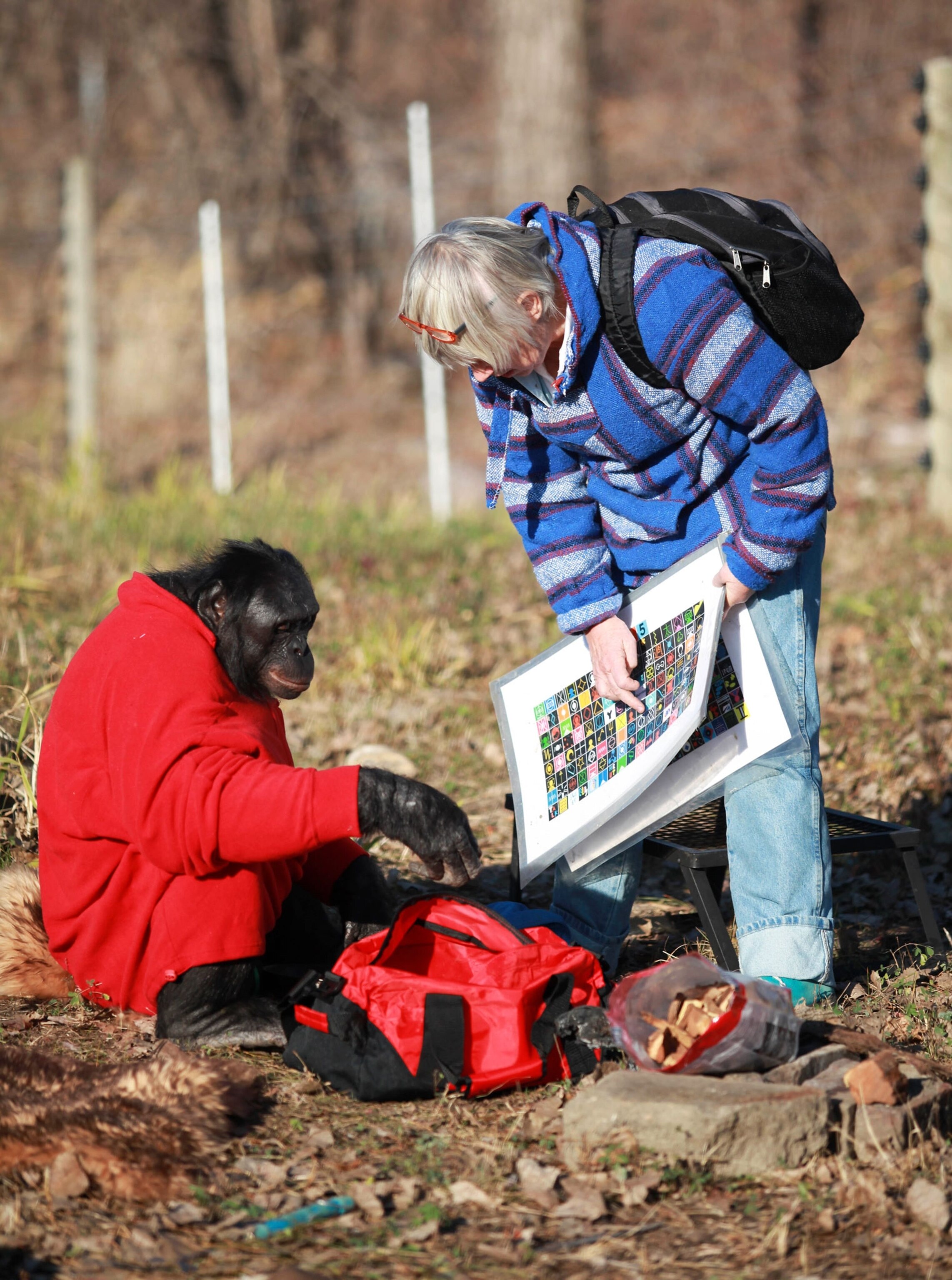
Meyer, Day, and some other early founders and directors began their work before formal primate training programs existed. As Ross says, the current generation of primate caregivers tends to have not only a bachelor’s degree but also a master’s, as well as “more specialized training and certificates to supplement training.” These programs, Ross says, underscore the importance of standard safety protocols and non-contact between humans and other primates.
At some sanctuaries a change in leadership seems to have helped. Primarily Primates founder Wallace Swett was removed from his post in 2006, when the facility was seized by the Texas government. Since then, Fleury says, although Primarily Primates isn’t a NAPSA member, Fleury says, they sometimes work together, and the sanctuary seems to be running smoothly.
In 2013, months after Sue Savage-Rumbaugh was reinstated as a resident scientist at the Great Ape Trust, she was barred from accessing the bonobos, her lawyer told me at the time. The facility was rebranded as the Ape Cognition and Conservation Initiative with researchers Jared Taglialatela and William Hopkins at the helm. Rumbaugh refers to the change as “ACCI’s takeover” and as a “defrauding of Bonobo Hope,” which she says is unrelated to employees’ 2012 letter.
When asked for comment about Rumbaugh’s claims, ACCI responded, “We have no comment in response to Dr. Rumbaugh other than to state that the care and welfare of the bonobos has and will continue to be the main priority of ACCI.”
According to a 2017 Iowa Public Radio broadcast, the facility “changed a lot” after Savage-Rumbaugh’s departure. Visitors are no longer allowed to touch bonobos, and the apes “look healthier.” Kanzi, who was obese, has lost 80 pounds.
Since OSHA’s investigation of Chimps Inc., changes have been made to safety protocols. Meyer says a new “lock out, tag out” program gives only one employee access to keys, reducing the possibility that multiple doors might accidentally be left unlocked, and feed doors like the one CJ escape from are locked and no longer used. In accordance with OSHA’s requests, a second “safe zone” has been designated in case of a chimp escape.
Meyer says Chimps Inc. plans to reapply for GFAS accreditation and NAPSA membership. Meanwhile the sanctuary is appealing some of OSHA’s citations, including one on the use of oral Telazol, noting that “the inspector did not demonstrate an understanding of chimpanzee behavior and management.”
It’s too soon now to assess the effects of Day’s stepping aside. As former employee Rhianna Axon says, it can be hard to change procedures that have been in place for two decades. “If it was easy, it would’ve been done already.”
Jane C. Hu is a freelance writer who writes about science and society. Follow her on Twitter: @jane_c_hu.
